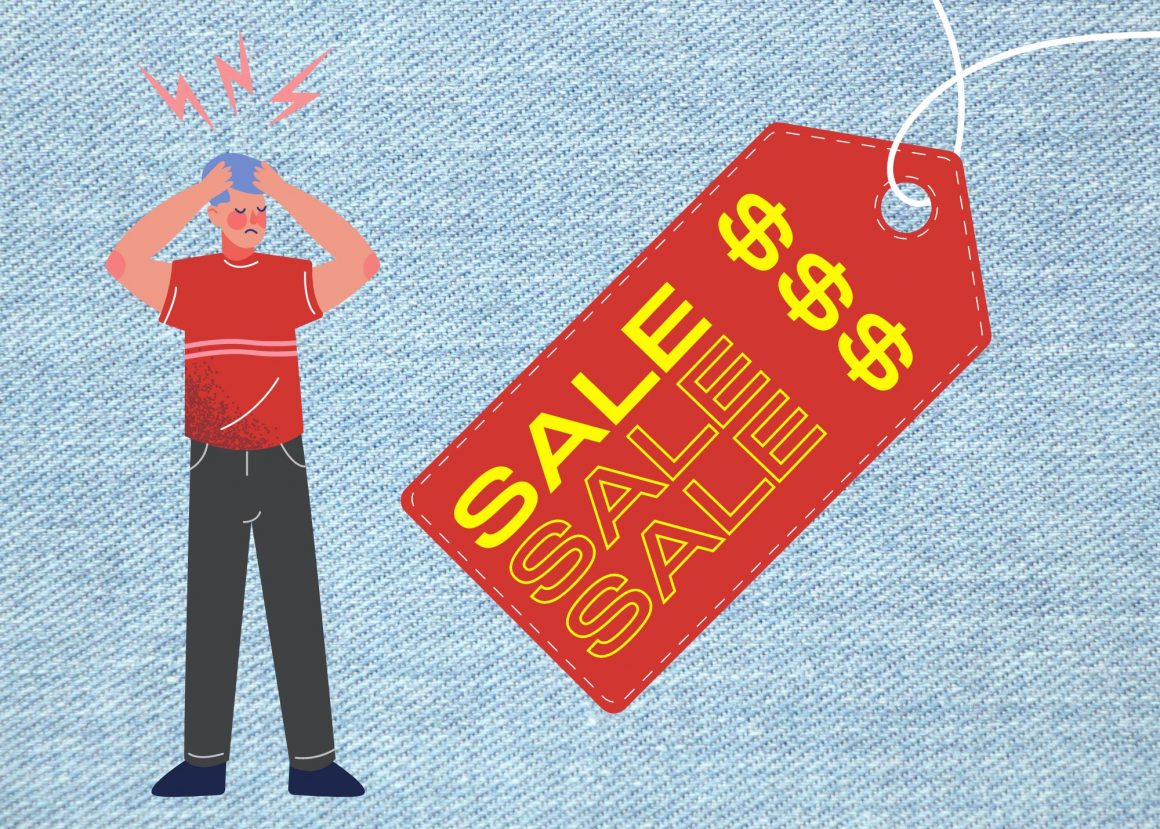
The unintentional hijacking of the clothing resale market
By Nazeefa Ahmed, December 14 2022—
Thrifting and the online resale market had an unprecedented boom in the past few years. A 2022 report from Thredup, the largest online resale store in the world, projected that second-hand shopping will grow 127 per cent by the year 2026. In contrast, fast fashion growth is expected to plateau and retail stores are predicted to lose market share.
“The closet of the future is circular with an ever-rotating wardrobe,” ThredUp boasts on their website.
This sudden shift from unrelenting consumerism to a circular economic model has left many experts scratching their heads. For years, thrifting was stereotyped as a practice for the economically underprivileged and, therefore, was looked down upon as socially undesirable. After all, why should someone buy second-hand when they can afford the newer, trendier item from their favourite retailer?
Thrifting had serious social sanctions, as vividly depicted by CBC’s Nonfiction literary prize recipient Jonathan Poh in his cathartic piece, Value Village. As immigrants in the early 2000s, Poh’s family relied on the low prices of thrift store clothes in their first few years in Canada. Looking back, however, thrift stores unearth feelings of shame and worthlessness in Poh, and memories resurface of him being bullied in school for wearing a Value Village Puma jacket with signs of wear and tear.
Thrifting at the time was synonymous with the lower class, which propagated elitist attitudes among those who could afford to purchase fresh off the rack. Instagram encouraged this ideology further with the introduction of the idealized and picture-perfect social media feed of the mid-2010s. Influencers on these platforms rarely repeated outfits, which disillusioned non-influencers into treating clothes as disposable items. Fast fashion brands such as Shein, Fashion Nova, and Boohoo proceeded to fill the vacuum of consumers who wanted to replicate the “it-girl” social status on a budget.
But there has been a recent shift in the attitudes and cultural motivations of young shoppers. Now — more than ever — every cut, fabric and silhouette is in style. Trends are changing too fast for the average consumer, resulting in the emergence of distinct and specialized aesthetics — dark academia, cottage core, grunge, and goth, to name a few. Forever 21 mannequins are no longer an aspiration for most, as dressing to one’s personal preferences is both accepted and encouraged.
Thrift stores are a gold mine for an aesthetics shopper — with peculiar, vintage and classic items for anyone — they provide an opportunity to dress uniquely without having to break the bank. Gen Z and millennials flocked to the resale market all at once, creating high demand in a space that was largely shunned by society up until then. High demand led to the diversification of supply, and a hierarchy of quality was created to profit off the customer base. Independent online sellers on sites such as Depop and Poshmark raided local thrift stores for desirable pieces and sold the items for more than double the price online. Corporate thrift stores, such as Goodwill and The Salvation Army, have increased prices as well, both due to increasing demand and inflation. Ultimately, the resale market became unequivocally gentrified, as those of low socioeconomic status, who rely on thrift stores as a lifeline, are left with high prices, while more affluent individuals take all of the goods.
True vintage and quality clothing have been hijacked by large Shein dumps alongside Depop and Poshmark sellers who are cashing in, and while it is inevitable that a capitalist hierarchy will present itself in a place of high demand, it is interesting to observe the changing attitudes.
As someone who had never thrift shopped until two months ago — I, too, was influenced by the increased push to find a personalized aesthetic outside of retail norms. During my first shopping experience, I was surprised to find many almost-new clothes among the collections, ready to be dumped in a landfill if someone didn’t purchase them. I saw Shein crop tops and Tiktok-viral printed jeans scattered among the racks. More importantly, I saw the waste that we produce as a species in the name of fashion — not to mention the underpaid and overworked garment workers we are relying on to maintain the unrelenting cycle of consumption.
Thus, I believe the solution to gentrification is not to stop thrifting. In 2021, ThredUp’s report found that the resale market replaced one billion new clothing purchases — thrifting is one of the ways we progress toward a sustainable future. We, however, need to understand that thrifting was looked down upon and the poor were sanctioned for wearing used clothes as a result of being stuck in a cycle of poverty — something that they neither asked for, nor could control. The sudden acceptance of buying second-hand shows us that prejudice does not only apply to race-based circumstances. Prejudice can apply to any socially constructed system with a clear power dynamic and motivation.
Ultimately, the culture and societal attitude around buying second-hand clothing shifted due to aesthetic changes in social media, an awareness of the environmental impact, and the decentralization of trends into specialized aesthetics. Thrifting tapped into the market of young shoppers who wanted to express their fashion sense outside of retail norms. Although we collectively bear the burden to control our consumerism by practicing sustainable purchasing, we also need to critically analyze how our socioeconomic privilege and elitist attitudes towards the less fortunate apply to even the best of actions and intentions.
This article is a part of our Voices section and does not necessarily reflect the views of the Gauntlet editorial board.
